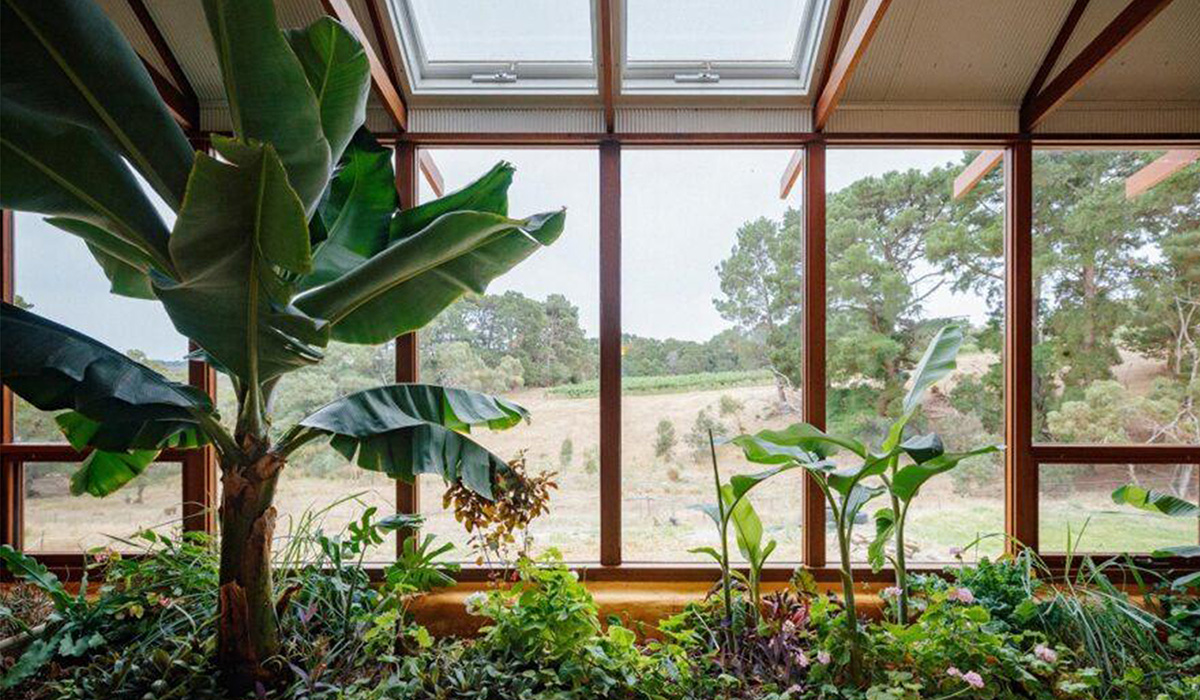
Only a decade ago, unplugging your home from the national power grid would have required massive reduction in energy use during days with no sun or wind. Today, breakthroughs in energy storage allow us to save excess energy for cloudy and breezeless days, while rapidly dropping prices for smarter and more efficient technology have made off-grid living a possibility for a larger pool of people.
Here are a few features of la vie hors réseau, and some things to
keep in mind when scouting for your own self-sufficient dwelling.
In Morocco, a team of students and organizations has completed the construction of a solar-powered hemp house. The facade is a mixture of locally sourced hemp, earth, pozzolan and lime, while the 24 semi-flexible photovoltaic panels are exposed to all faces with a maximum of 40% losses. The curved roof panels increase the performance of the photovoltaic panels by protecting their back side against the weather extremes of the semi-arid region.
Key benefit: Local sourcing and low-cost materials makes for budget friendly construction. The one-family house came with a $120,000 price tag — less than half the cost of the most expensive buildings in the competition.
If you feel like an eco-friendly weekend getaway, then consider going to Ironbank, Australia, where a group of volunteers has constructed the country’s first council-approved earthship. If you are unfamiliar with the term, an earthship is a type of house built entirely out of natural and recycled materials.
This two-person Airbnb property was built by 60 volunteers and made out of reclaimed glass bottles and tires that were pounded into a curved shape. Yet, an even more interesting feature of the house is that every part was built with energy conservation in mind. The residence relies primarily on solar power and also has a solar hot-water system.
Crédit Photo : Earthship Ironbank
Key benefit: Although the house runs on solar, the tire-based facade makes for a tight thermal shell that reduces the need for high-tech energy and water systems.
Further north, municipal housing provider Vätterhem plans to construct Sweden’s first hydrogen-fuelled apartment building. The 100% off-grid, self-sufficient facility features a solar-cell shell, where facades, roof and the house’s glazing are covered in solar cells. For the long Scandinavian winters, the plan is to store energy in hydrogen gas which will be converted to electricity and heat via fuel cells. But the innovation doesn’t stop there. The building will have a circular water system, where purification and recirculation of hot and gray water reduce the energy demand. In addition, a hybrid “termite” ventilation system will heat the air during winter and cool it down in the summer — requiring minimal fanning.
Key benefit: While sustainable water systems are becoming increasingly common — like harnessing rain and gray water — Vätterhem takes it to the next level by both recovering heat from the electrolysis process that makes hydrogen gas, as well as the heat produced in the cooling water around the fuel cell. In total, the energy needed for water heating is reduced by 80%.
With limited natural resources and the need for shorter energy distribution networks, islands are the ideal turf for off-the-grid innovation. In western France, a collective self-consumption project was recently launched, in partnership with the town hall of Île d'Yeu off the coast of Vendée: Named Harmon’Yeu, this ENGIE-funded project is the first such “renewable energy community” of its kind in the country, allowing 23 neighbors to share and store the electricity generated by 64 solar panels installed on five of the houses’ roofs — covering 28% of the community’s energy needs. In addition to supplying the photovoltaic gear, ENGIE has developed the smart software used to distribute the energy dynamically, through its ENGIE Laborelec research center.